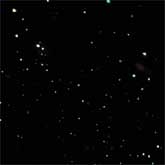What Happens at the Edge of a Black Hole?
 The greatest extremes of gravity in the Universe today are the black holes formed at the centers of galaxies and by the collapse of stars. These invisible bodies can be studied by examining matter swirling into them, and by listening to the waves of distortion they make in spacetime. New data from X-ray satellites, such as NASA's Chandra X-ray Observatory and ESA's XMM-Newton, show signs of gas whizzing about black holes at close to the speed of light and hint that time is slowing as the gas plunges into the zone from which escape is impossible. Beyond Einstein missions will take a census of black holes in the Universe and give detailed pictures of what happens to space and time at the edges of these roiling vortices.
The greatest extremes of gravity in the Universe today are the black holes formed at the centers of galaxies and by the collapse of stars. These invisible bodies can be studied by examining matter swirling into them, and by listening to the waves of distortion they make in spacetime. New data from X-ray satellites, such as NASA's Chandra X-ray Observatory and ESA's XMM-Newton, show signs of gas whizzing about black holes at close to the speed of light and hint that time is slowing as the gas plunges into the zone from which escape is impossible. Beyond Einstein missions will take a census of black holes in the Universe and give detailed pictures of what happens to space and time at the edges of these roiling vortices.
Beyond Einstein missions will listen to the sounds of spacetime carried by a new form of energy, predicted by Einstein, called gravitational waves. We will hear the booming, hissing, and humming of colliding and merging black holes and other extreme flows of matter throughout the Universe. These sounds will detail the conversion of matter and energy into warps in space and time. The measurements of gravitational waves will provide a new way of understanding the behavior of space and time near black holes and take us beyond to a new understanding of spacetime singularities.
Einstein himself never dreamed that it would be possible to detect these waves, which only vary the distance between objects as far apart as the Earth and Moon by less than the width of an atom. Yet the technology now exists to do so.
About the Author
NASA Goddard Space Flight Center
 The Goddard Space Flight Center is a major NASA space research laboratory located approximately 6.5 miles northeast of Washington, D.C. in Greenbelt, Maryland, United States.
The Goddard Space Flight Center is a major NASA space research laboratory located approximately 6.5 miles northeast of Washington, D.C. in Greenbelt, Maryland, United States.


